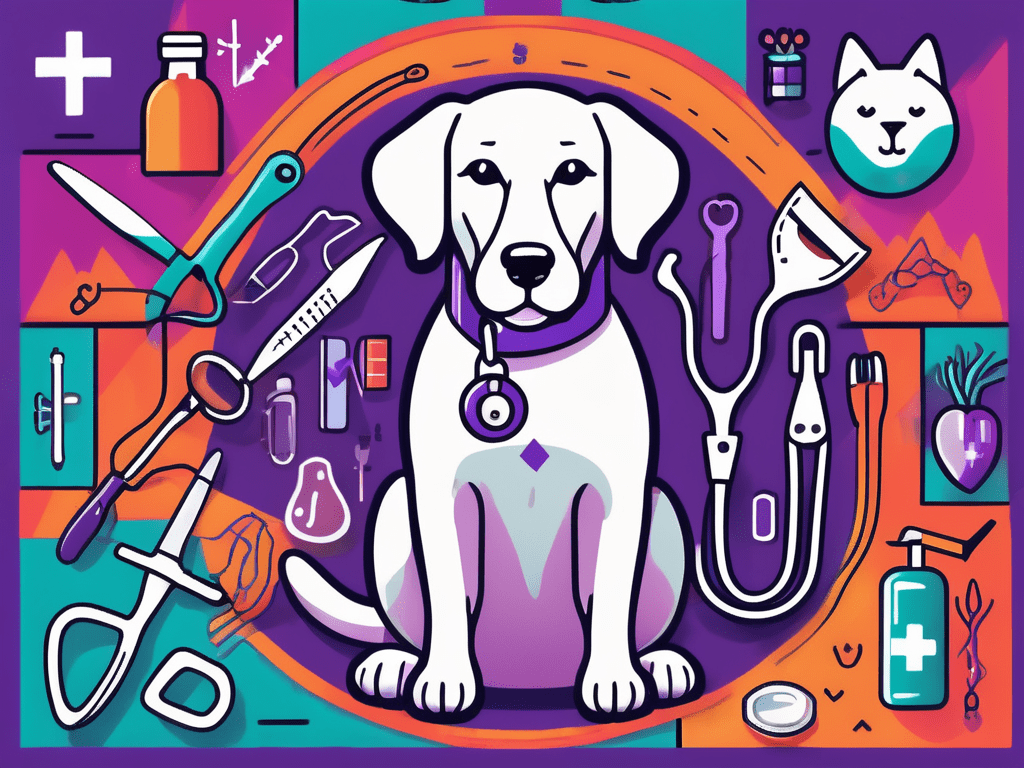What Is Pet Insurance and Why Do You Need It?

Understanding Pet Insurance
Pet insurance has become increasingly popular among pet owners. But what exactly is it? At its core, pet insurance is a health insurance policy designed to cover the costs of veterinary care for your furry companions. Just like human health insurance, it aims to help mitigate financial risks associated with unexpected medical expenses.
The Basics of Pet Insurance
When you purchase a pet insurance policy, you pay a premium, typically on a monthly basis. In return, the insurance company agrees to reimburse you for eligible medical expenses incurred for your pet. This can include everything from routine check-ups to emergency surgeries, depending on your specific policy.
Most providers have different plans ranging from basic accident coverage to comprehensive policies that encompass accidents, illnesses, and wellness care. The comprehensive plans often offer more extensive coverage but usually come with a higher premium, so it’s crucial to evaluate your options based on your needs and budget. Additionally, many insurers offer customizable plans, allowing you to tailor your coverage to fit your pet’s specific health needs and lifestyle, which can be particularly beneficial for pets with pre-existing conditions or those that require regular medical attention.
Types of Pet Insurance Coverage
Pet insurance coverage mainly falls into three categories:
Accident-Only Coverage: This plan covers expenses related to accidents, such as fractures or ingestion of foreign objects. However, it does not cover illnesses.
Accident and Illness Coverage: This is the most common type of pet insurance. It covers both accidents and a wide range of illnesses.
Wellness Plans: These are often add-ons that cover routine preventive care, such as vaccinations, annual check-ups, and dental cleanings.
In addition to these standard coverage types, some insurers offer specialized plans for specific breeds or age groups. For instance, senior pets may require more frequent veterinary visits and treatments for chronic conditions, prompting some companies to provide tailored policies that address these unique needs. Furthermore, certain breeds are predisposed to specific health issues, and having a policy that acknowledges these risks can provide peace of mind for pet owners.
How Pet Insurance Works
The process of using pet insurance is quite straightforward. After paying your premium and when your pet requires veterinary care, you simply pay the vet at the time of service and file a claim with your insurance provider. Most companies allow you to file claims online or through an app, making the process convenient.
Once your claim is reviewed and approved, the insurer will reimburse you for eligible expenses based on your policy’s terms. It’s important to note that you may have to cover the costs upfront, so having a buffer for unexpected pet expenses is always a good idea. Additionally, some policies may have waiting periods before coverage begins, particularly for illnesses, so it’s wise to read the fine print before committing to a plan. Understanding the nuances of your policy, including deductibles, co-pays, and coverage limits, can significantly impact your overall experience and financial planning when it comes to your pet’s health care.
The Importance of Pet Insurance
Pet insurance can be the safety net every pet owner needs! It not only saves you money but also provides reassurance that you can give your pet the best care possible without worrying about escalating costs.
Financial Benefits of Pet Insurance
The financial benefits of pet insurance are significant. With the rising costs of veterinary care, serious health issues can lead to hefty bills, often totaling thousands of dollars. Pet insurance can help alleviate this burden, allowing you to make decisions based on what’s best for your pet rather than what’s affordable.
For instance, treatments for chronic conditions such as diabetes or cancer can be extremely expensive, and without pet insurance, many owners might hesitate to seek treatment. With coverage, you can provide appropriate care without the added stress of financial constraints.
Moreover, pet insurance can also cover unexpected accidents, such as broken bones or ingestion of harmful substances, which can occur at any time. The peace of mind that comes from knowing you can handle these emergencies without crippling your finances is invaluable. Many plans even offer additional perks, such as coverage for alternative therapies like acupuncture or chiropractic care, which can enhance your pet’s recovery and overall well-being.
Ensuring Your Pet’s Health and Wellness
Having pet insurance encourages routine veterinary visits, as many plans offer coverage for preventative care. Regular check-ups can catch health issues early, ensuring your pet stays healthier for longer. The peace of mind knowing that you can afford these visits makes being a responsible pet owner a lot easier.
Plus, well-cared-for pets lead happier lives. After all, a healthy pet is a happy pet, and nothing compares to the joy they bring into our lives! Regular vaccinations, dental cleanings, and wellness exams can prevent serious health issues down the line, and insurance can help offset these costs. This proactive approach not only benefits your pet’s health but can also foster a deeper bond between you and your furry friend, as you invest in their well-being together.
Peace of Mind for Pet Owners
Every pet owner knows the dread that accompanies sudden health issues. Pet insurance gives you peace of mind. You can focus on your pet’s recovery rather than focusing on how to pay for expensive treatments.
After all, pets are family! Wouldn’t you want the best for them? Pet insurance helps ensure you can provide that care without the constant worry over finances. Additionally, many insurance companies offer user-friendly apps and online portals that make it easy to manage your policy, file claims, and track your pet’s health history. This level of accessibility not only simplifies the process but also empowers you to make informed decisions about your pet’s healthcare. Knowing that you have a support system in place can make all the difference during stressful times, allowing you to focus on what truly matters: your pet’s happiness and health.
Choosing the Right Pet Insurance
Choosing the right pet insurance might seem overwhelming given the plethora of options available. However, by considering a few key factors, you can navigate this decision with ease.

Factors to Consider When Choosing Pet Insurance
When selecting a pet insurance policy, consider the following:
Breed and Age: Some breeds are prone to specific health issues which can affect policy costs. Older pets usually have higher premiums due to their increased risk for various problems.
Coverage Options: Consider what aspects of care you want covered and choose a plan that fits your lifestyle—accidents only, illness, or wellness care.
Waiting Periods: Understand that most policies have waiting periods during which, even after purchasing, you cannot claim for certain conditions. This varies from provider to provider.
Understanding Pet Insurance Policies
It’s essential to read the fine print. Understanding your policy will help you avoid unpleasant surprises later on. Make sure you know what is and isn’t covered, your deductible amounts, and how the reimbursement process works.
Many companies provide a sample policy on their websites, so don’t hesitate to review these documents, or even ask questions before you commit. The right choice is one that leaves you feeling informed and confident. Additionally, consider the policy’s lifetime limits, which can dictate how much your insurer will pay over the course of your pet’s life. Some policies may have annual limits, while others might offer unlimited coverage, which can be crucial for pets with chronic conditions.
Tips for Comparing Pet Insurance Plans
When comparing pet insurance plans, consider these tips:
Research and Reviews: Look up reviews online or ask fellow pet owners about their experiences with different providers.
Get Quotes: Don’t settle for the first policy you find! Get quotes from multiple companies to ensure you are getting the best coverage for your money.
Examine the Network: Check which veterinarians are in the network and ensure that your preferred vet is included.
Furthermore, it can be beneficial to look for additional perks that some insurers offer, such as coverage for alternative therapies like acupuncture or chiropractic care, which can be valuable for pets with specific health needs. Some policies may also provide discounts for multiple pets or for signing up online, so be sure to ask about any potential savings that could make your insurance more affordable. Remember, investing time in this research can lead to significant savings and peace of mind when it comes to your pet’s health care.
Common Misconceptions About Pet Insurance
Despite its growing popularity, pet insurance is often surrounded by various misconceptions. Let’s dispel some of these myths!
Debunking Pet Insurance Myths
One common myth is that pet insurance is too expensive. While premiums can vary widely, there are plans available to fit almost any budget. Remember, emergencies and significant health issues will cost much more than the premium over time!
Another misconception is that pet insurance only covers illnesses, when in fact, many policies cover accidents and preventative care too. Always choose a plan that covers a breadth of potential issues to get the most bang for your buck!
The Truth About Pet Insurance Costs
Many people assume that pet insurance costs a fortune, but this isn’t always the case. Basic accident-only plans can be quite affordable. For those on a budget, selecting a higher deductible might reduce your monthly premium while still providing backup against costly unexpected emergencies.
In fact, comparing the costs of potential treatments versus premiums paid shows that insurance could save you a significant amount over time. For instance, a single emergency surgery can easily run into the thousands, while a year’s worth of premiums might be just a fraction of that cost. This financial safety net can be invaluable, especially for pet owners who want to ensure their furry companions receive the best care without the burden of overwhelming bills.
Why Pet Insurance Isn’t Just for Sick Pets
Another myth is that you only need pet insurance if your pet is sick. The reality is that accidents and unexpected illnesses can happen to anyone at any time! That’s why it’s wise to take preventive measures, including investing in pet insurance before those unfortunate incidents occur.
It’s never too early or late to get coverage for your furry friend. Health issues and accidents can strike out of the blue, and having insurance provides peace of mind when you need it most. Moreover, many insurance plans offer wellness coverage, which includes routine check-ups, vaccinations, and dental care. This means that not only can you protect your pet from unforeseen accidents, but you can also invest in their long-term health, ensuring they live a happy and active life. By prioritizing both preventive care and emergency coverage, pet owners can create a comprehensive health strategy that benefits their pets immensely.
The Future of Pet Insurance
As the pet care industry continues to evolve, so does pet insurance. With increasing awareness of the benefits it provides, more and more pet owners are turning to insurance options to ensure their pets are protected.
Trends in Pet Insurance
Some emerging trends in pet insurance include personalized plans tailored to your pet’s specific needs, collaborative care involving veterinarians and insurance providers, and an increase in wellness coverage options. In the future, tailor-made insurance plans based on breed, age, and individual health history could become the norm!
Moreover, as people become more aware of the long-term benefits of pet ownership, including the associated costs and insurance needs, we can expect to observe rising enrollment rates in pet insurance policies. This shift is also influenced by the growing number of pet-related expenses, from routine check-ups to unexpected emergencies, prompting owners to seek financial protection for their furry companions.
Additionally, the rise of pet ownership during the pandemic has led to a surge in demand for pet insurance, as new pet parents are particularly keen on safeguarding their pets’ health. This trend is likely to continue, as the bond between humans and their pets deepens, further solidifying the place of insurance in responsible pet ownership.
How Technology is Changing Pet Insurance
Technology is also playing a significant role in transforming the pet insurance landscape. Many companies are now utilizing telehealth services, allowing pet owners to consult veterinarians from the comfort of their homes.
Additionally, the use of apps to manage policies, file claims, and monitor your pet’s health is gaining traction. This tech-savvy approach makes insurance more manageable and accessible to pet owners, emphasizing convenience and ease of use. With features like reminders for vaccinations and check-ups, these apps help ensure that pet owners stay proactive about their pets’ health, ultimately leading to better outcomes.
Furthermore, advancements in artificial intelligence are enabling insurers to analyze vast amounts of data to create more accurate risk assessments and pricing models. This means that pet owners may soon benefit from more competitive rates and customized coverage options that reflect their pets’ unique health profiles.
The Role of Pet Insurance in the Veterinary Field
Pet insurance is becoming increasingly important in the relationship between pet owners and veterinary practices. As more pet owners opt for insurance, veterinarians can offer services and treatments without the constant worry about the financial implications for their clients.
In the end, pet insurance can lead to improved health outcomes for pets as owners are more likely to seek timely medical treatments and preventive care. This collaborative approach is a win-win for all involved! Moreover, as veterinary practices become more accustomed to working with insurance providers, we may see the development of more integrated care models, where veterinarians and insurers collaborate closely to ensure that pets receive the best possible care without financial barriers.
This synergy could also pave the way for new initiatives, such as wellness plans that cover preventive treatments, vaccinations, and regular check-ups, making it easier for pet owners to keep their pets healthy and happy. Such innovations not only enhance the quality of care but also foster a culture of responsible pet ownership that prioritizes the well-being of pets at every stage of their lives.


